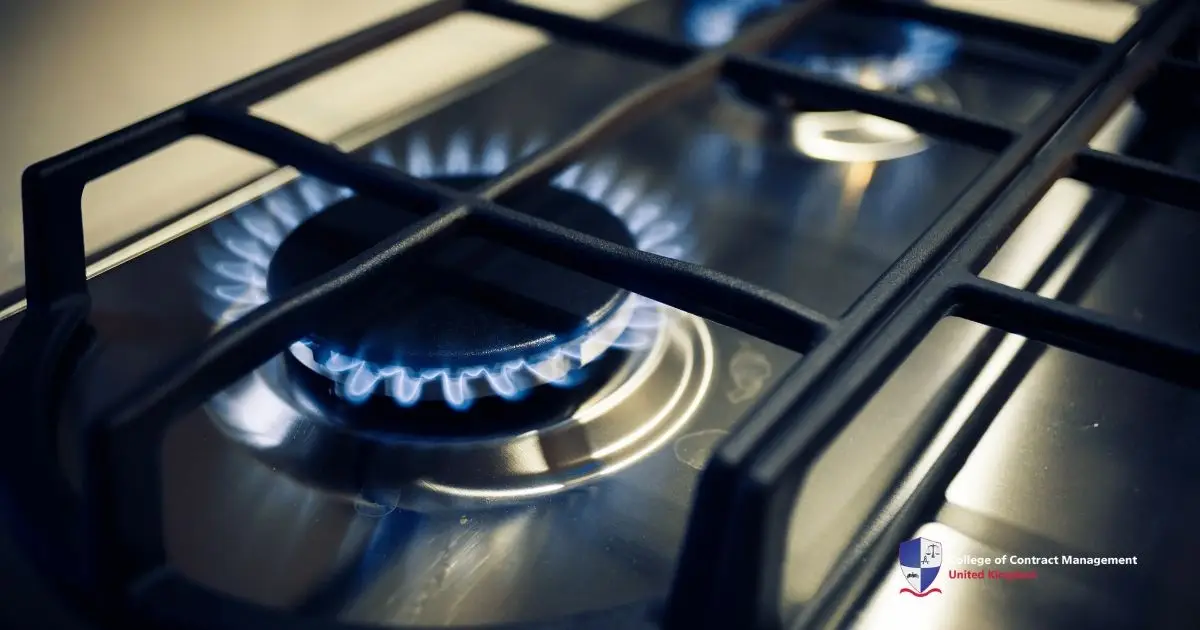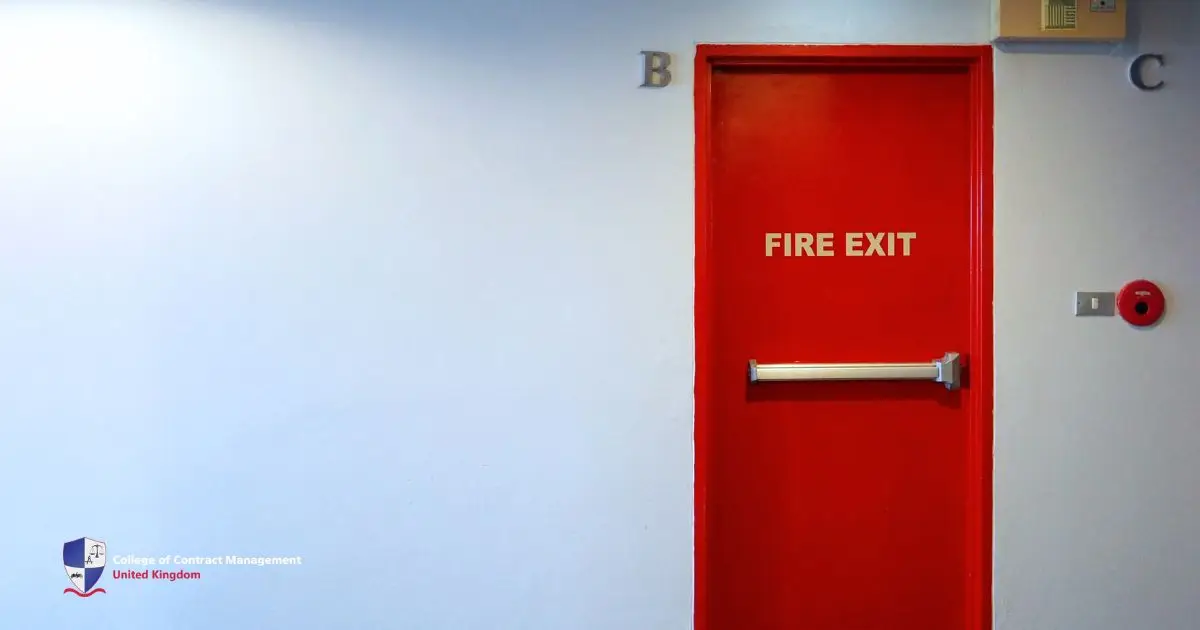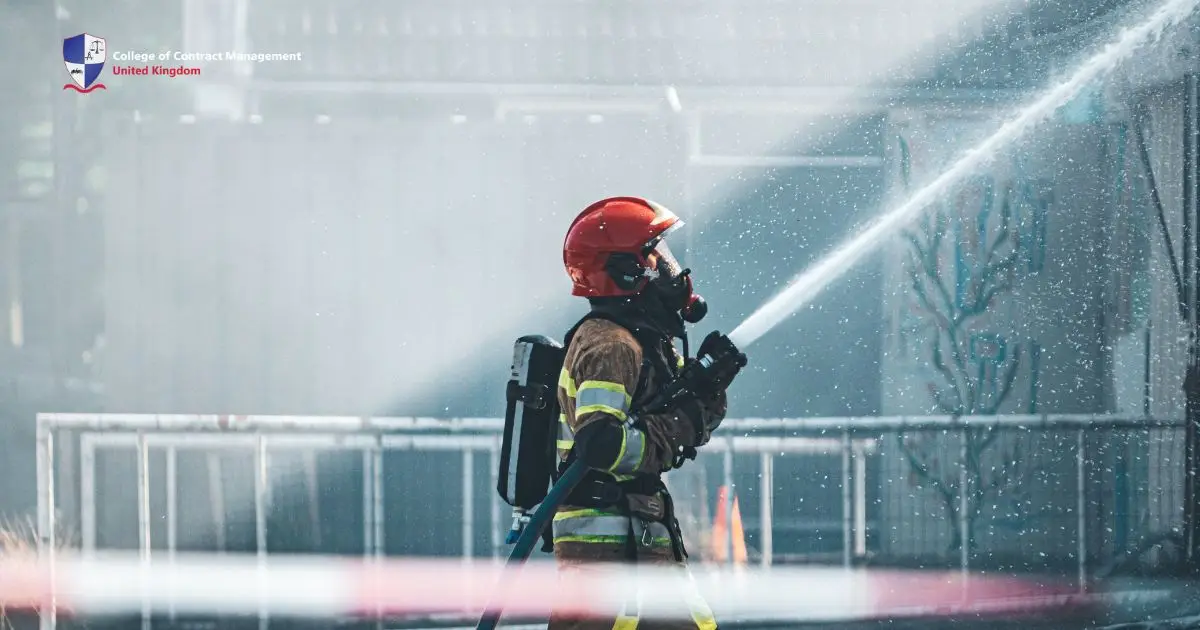Gas fires at home can be terrifying, and they’re more common than we might think. In the last five years, there was an average of 34,136 house fires in the UK per year. At the same time, the average number of gas-related incidents is 121 houses. These fires often start from something simple, like a small gas leak. Once they ignite, they can spread quickly and become much more dangerous. Once they ignite, they can spread quickly and become much more dangerous. Therefore, learning how to react to a gas fire is important to avoid problems.
In this article, we’ll explain the best way to extinguish fires at home. First, we’ll discuss the causes of fire from gas. We’ll also highlight the mistakes in putting out gas fires alongside the solution for the right way. By following these tips, we’ll learn to prevent a dangerous situation from getting worse.
What causes a gas fire?
A gas fire at home can start suddenly from a small fire. However, it can get bigger and cause danger. This can happen from gas leaks, broken appliances, or using fire near gas. In addition to that, fire can happen quickly when gas builds up in a room with poor airflow. With this in mind, learning about common causes of gas fires helps to keep everyone safe. Here are the details:
- Gas leaks: Gas can escape from broken pipes or connections in appliances. If the gas comes into contact with a spark or flame, it can cause an explosion or fire.
- Faulty appliances: Home appliances like stoves, heaters, and boilers can break down over time. When they stop working correctly, the gas may leak and cause a fire.
- Lack of ventilation: A room with bad airflow can trap gas. This is dangerous because the gas concentration can rise to dangerous levels. As a result, a tiny spark or flame can trigger a gas fire.
- Neglected maintenance: Gas appliances need regular checks to make sure they’re working safely. For instance, checking the gas pipe to ensure there’s no tear.
Common mistakes in putting out a gas fire
Gas fires can be really dangerous and tricky to handle. Therefore, it’s important to know what to do when they happen. Unfortunately, many people make mistakes when putting a gas fire out. For instance, water can be used to extinguish the fire. Since water is a conductor and gas fires have flammable liquids, pouring water can spread the flames further.
Aside from using water, there are other common mistakes when handling gas fires. Here are the details:
Throwing water on a gas fire
One of the biggest mistakes when dealing with a gas fire is throwing water on it. Gas fires, especially from LPG, contain flammable liquids. Therefore, using water to turn off this fire is a bad move. This is because those liquids don’t mix well with water. When water hits the fire, it can cause the flame to spread. Consequently, the fire is getting worse and can’t be put out.
Poor Evacuation Planning
In the heat of the moment, panic can lead to rash decisions that make the situation worse. For example, trying to extinguish a gas fire without understanding the right way can cause the fire to spread. Besides, forgetting safety steps like evacuating the area can cause further damage. In other words, those rushed actions can trigger bigger risks.
Delaying Professional Assistance
Delaying the use of firefighters while putting out a gas fire can be dangerous. This can increase the risk of the fire spreading. For this reason, gas fires need immediate action because there are materials that easily burn. Therefore, it’s important to call professional help to ensure safety and minimise damage.
Methods to extinguish a gas fire at home
Gas fires at home can be dangerous. This is because they can spread quickly and cause a lot of damage. With this in mind, knowing how to put out a gas fire helps to keep everyone safe. In some cases, shutting off the gas supply helps to stop fire from spreading through the air. Aside from this, there are still some ways to put the fire out.
- Shut off the Gas Supply: Shutting off the gas valve prevents the gas fire from spreading. The valve is usually on the appliance or at the gas metre. After finding the valve, turn it to the right to close it. One thing that is important to realise is to leave the place immediately if the fire has already spread.
- Use a Class B Fire Extinguisher: This fire extinguisher handles flammable liquids like gases, oils, and others. To use this, use the PASS technique. First, pull the pin at the top of the extinguisher. Then, aim the nozzle at the base of the fire. This is important because the goal is to cut off the fire’s oxygen supply at the source. After that, squeeze the handle while sweeping the nozzle to cover the base.
- Smother the Fire with a Blanket or Fire-Resistant Cloth: Covering a fire with cloth helps prevent the air from spreading the flame. However, this only works for small fires. Before doing this, ensure the material of the fabric is hard to burn.
- Call Emergency Services: If the gas fire is out of control, it’s crucial to leave the place as soon as possible. Make sure everyone gets out of the house safely. After evacuating the people, call emergency services to get firefighters to do the job.
Tips to prevent a gas fire
To prevent a gas fire, it’s important to keep the gas appliances in good condition. Make sure to have a gas safe engineer check on them at least once a year. This is because items like gas hoses can wear out over time. By all means, taking this step reduces the fire risk from gas.
Another way to avoid fire risks is to use the gas appliances in the right way. One example is to keep the stove burners clean after use. Cleaning the burners is important to ensure that the heat is distributed well. On the other hand, never leave the appliance without supervision. In other words, be careful when using a gas device to prevent accidents.
Lastly, having the right safety tools at home can make a big difference. Install smoke and carbon monoxide detectors to detect dangers like gas leaks or smoke. Also, a fire extinguisher should be installed in a place where the heat activities are high. Overall, staying aware of the gas fire helps protect everyone.
Learn about gas safety with CCM!
A gas fire can be hazardous, and it's essential to remain calm and focused when dealing with one. If unsure how to handle the situation, calling emergency services should be the first step. Additionally, regularly inspect the gas appliances, pipes, and valves to ensure they are in good condition. Remember, always prioritise the safety of all people.
If you're looking to take your career to the next level, Enroling at the College of Contract Management is perfect. With a range of courses for all levels of experience, you'll gain the skills, knowledge, and certification for the industry. The flexible learning options allow you to study at your own pace while receiving practical insights. So, why wait? Enrol today and start your journey to a brighter career!





